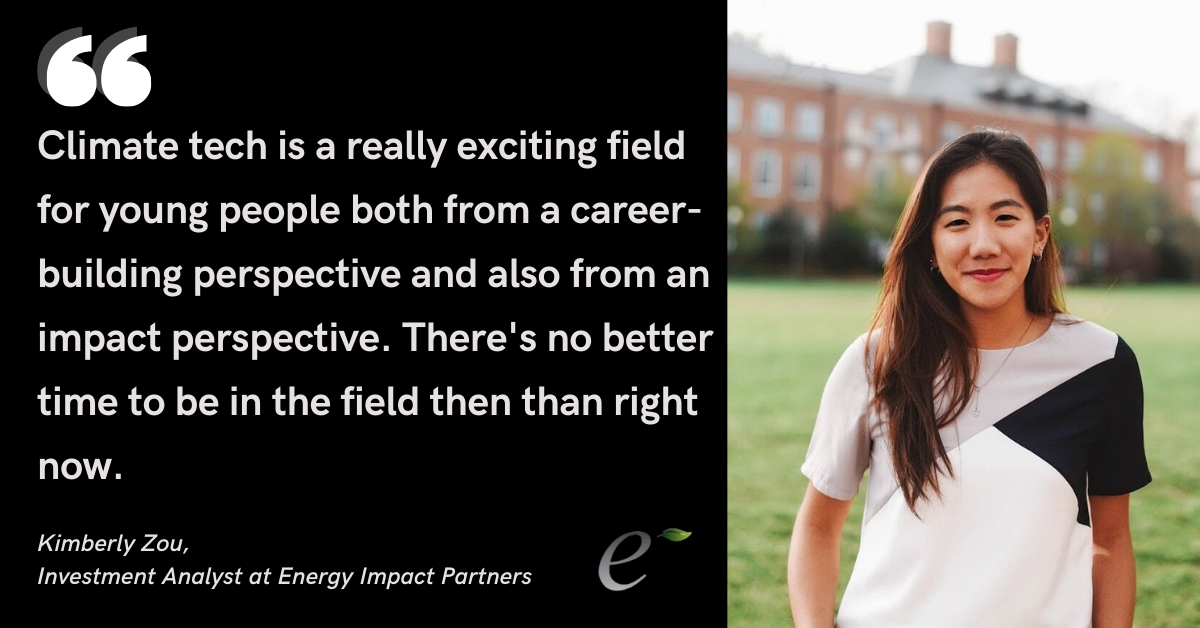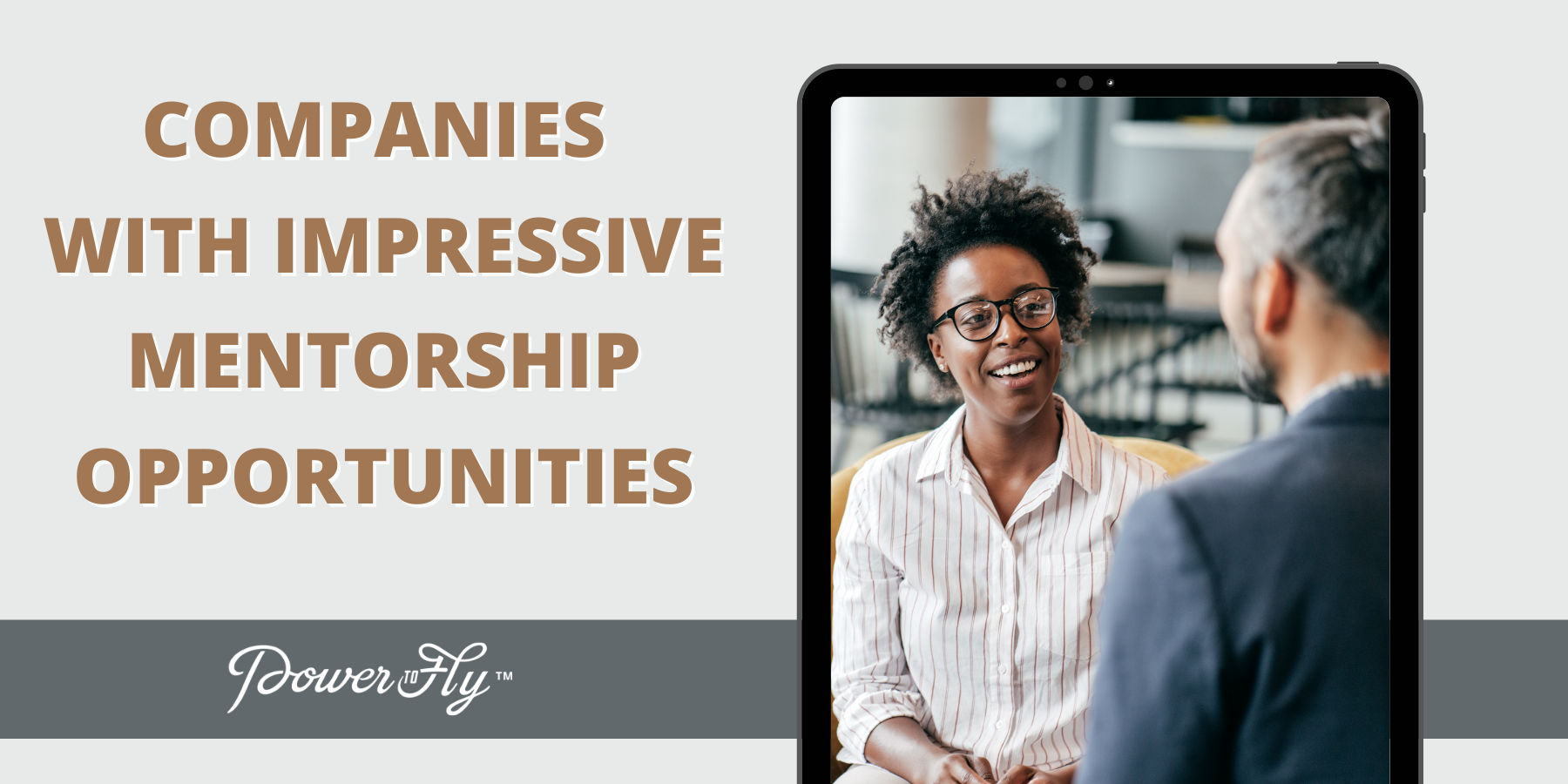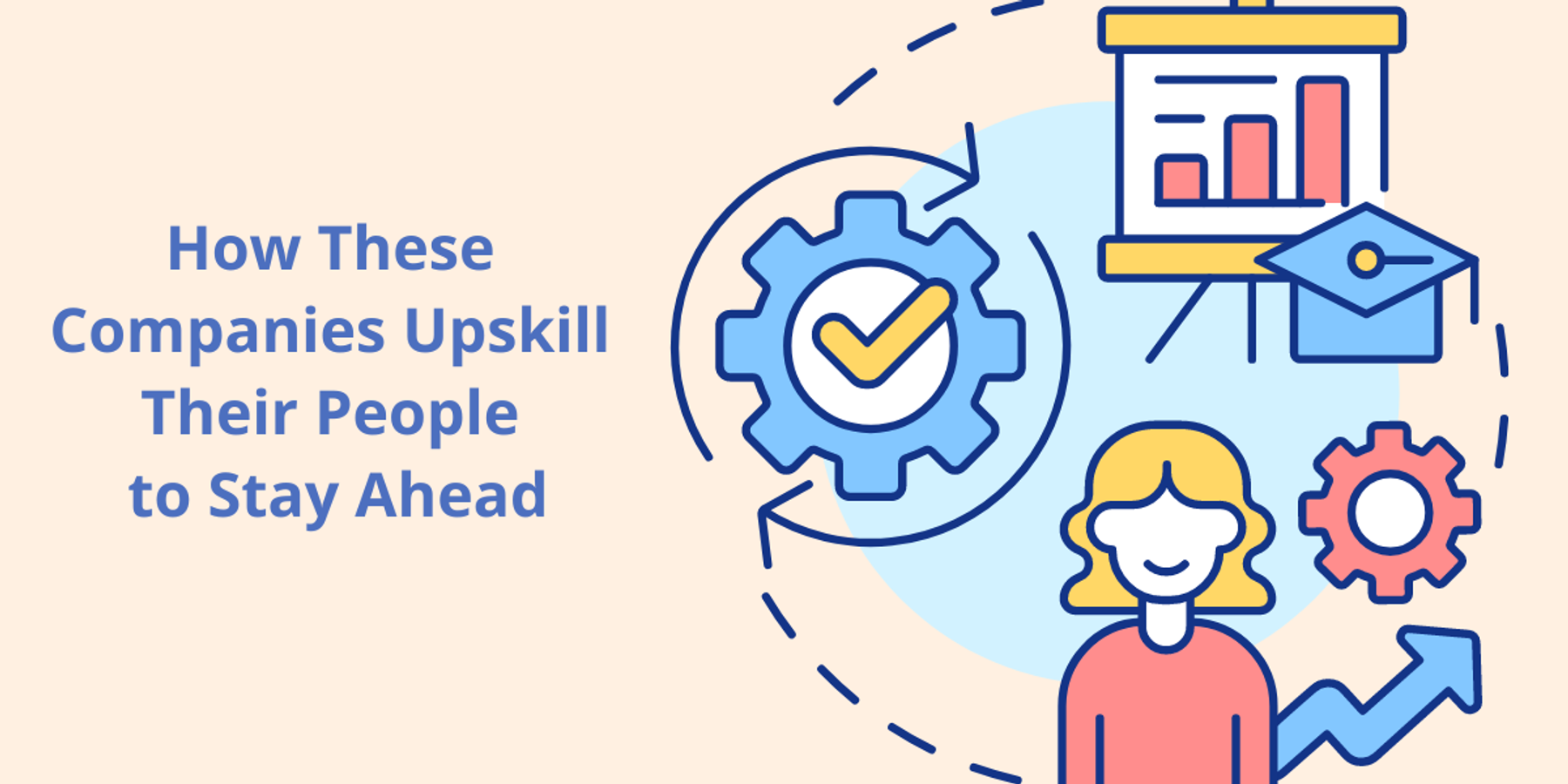Kimberly Zou did her first venture capital deal when she was a sophomore in college.
Now, a few years after graduation, she's an investment analyst at Energy Impact Partners, a global investment firm focused on clean energy. But she still leans on the skills she first honed as part of John Hopkins' student-run venture fund A-Level Capital, where she and her colleagues sourced deals, talked to founders, and ran their own due diligence.
Before joining the VC fund in college, Kimberly had started an environmental club in high school, and has always been passionate about the issue of climate change. Working at the intersection of finance and the environment has allowed her to approach environmental issues—an area of particular personal interest to her—with a practical, solutions-oriented lens.
We sat down with Kimberly to hear more about what's going on in the climate tech space, how her career path has evolved, and what advice she has for other women looking to get into venture capital.
Enabling climate solutions
Kimberly understands the viewpoint of environmentalists who think in terms of best-case-scenario solutions to climate problems, like completely eliminating factory farming or transportation emissions, but her personal approach is deeply rooted in everyday realities.
"A lot of environmentalists don't accept the reality of the world we live in today, which is, at the end of the day, a society governed by capitalism," she says.
Kimberly says that she first saw an opportunity to change the way business leaders approached environmental issues after taking a class on sustainable finance in college.
"Wherever we direct capital is going to have a huge impact on what we as society focus on, so being able to transition that capital away from fossil fuels and put it towards clean energy and the green transition overall will be really impactful at the macro level," says Kimberly.
Figuring out how to invest capital in climate tech innovation is a big part of Kimberly's job at EIP, which she describes as her"ideal job, right at the intersection of venture capital, climate, and tech."
She breaks her investment analyst role down into three sets of responsibilities:
- Sourcing, or "startup hunting," which involves looking for startups and connecting with founders. Sometimes these are companies she finds in her research, but oftentimes they're recommendations from others in the climate tech venture community. "What I love about climate tech is it's very collaborative. It's not as competitive as traditional enterprise software investing. A lot of inbound referrals will come through," she says. "It's all about maintaining and creating these network relationships and staying connected so we can be helpful when startups are thinking of raising."
- Diligence, or following a structured process to investigate an opportunity. A typical VC diligence process will dig into key areas such as the team, market opportunity, technology, competitive landscape, and go to market strategy. Kimberly also uses Excel to model out different projection scenarios to determine the returns profile of the startup.
- Portfolio management, or working directly with EIP's portfolio companies to help them succeed. Since EIP is backed by a consortium of utility companies, they often work to connect those utilities with companies they've invested in to create mutually beneficial partnerships and opportunities.
Finding a path into VC
Kimberly didn't start her career in VC, despite her undergrad experience. Not many people do, she says. "There's no clear-cut formula or pathfor getting into venture, especially venture in the climate tech or energy space," she says. "It's especially difficult right out of undergrad."
She started out in investment banking, working in the M&A group of a large bank. "I wanted to start off at a large company that could offer the platform, training, and resources to help me hone my technical and professional skills," she says. "Learning in school was great, but most of the things I've worked on at EIP I've learned through investment banking or on the job, both in terms of technical and professional development," she says. After sharpening her hard skills (see: all that Excel modeling) and soft skills (like the art of formatting an email), she was ready for a role that was more related to her interest in solving climate change and would allow more creativity and entrepreneurship.
Kimberly decided to refocus on her initial passion for climate by creating a newsletter on climate tech, Climate Tech VC, to have a forcing mechanism for spending time in that space and have a platform for sharing her learnings. As it grew to 7,000 readers (and counting), the newsletter introduced her to several thought leaders in the industry—including Cassie Bowe, a principal in EIP's San Francisco office, who Kimberly interviewed for an early edition of her newsletter and now works directly with.
Kimberly got to VC via investment banking and the networking power of a newsletter, and while her path would be hard to replicate exactly, the principles of learning hard skills and building a network do apply widely. "Getting into venture and climate tech - it's really something where you have to try to build your own network and actively reach out and connect to people," she says.
5 key tips for people thinking about VC
If you're looking to get into venture capital, or specifically into climate tech, Kimberly has some advice:
- Stay organized. When it comes to sourcing, diligence, and portfolio management, there are a lot of moving parts in venture, and no one best way to approach them. "There's no one really telling me, 'You should be working on X project and need to have it down by Y deadline,'" she says. Instead, Kimberly prioritizes work across her three buckets of responsibilities and relies on email folders, note-taking tools, and a master Notion board to keep track of everything she's doing.
- Maintain a direct channel to experienced mentors. For Kimberly, those are the partners at EIP. "People here are really down-to-earth, easy to talk to, and reach out to," she says. "Whenever I have a question, it's easy for me to ping someone on Slack and ask, 'How should I think about this?'"
- Read and listen widely. A good VC is constantly learning, says Kimberly, who recommends the following specific resources:
- Climate Tech VC, the newsletter she co-founded. "I find newsletters really helpful because it's a consistent flow of information that's coming at you, always on time, and up to date," she says.
- Axios Pro Rata newsletter
- Fortune's Term Sheet newsletter
- The Twenty Minute VC podcast
- The Interchange podcast, co-hosted by EIP partner Shayle Kann
- My Climate Journey podcast
- Build your network. "Even if you're in school, reach out to people that are in industry," says Kimberly. "Being in college gives you a great excuse to reach out to people because you can just say, 'I'm a student and I'm interested in learning about what you do.'" She also recommends "LinkedIn stalking" and asking people about their career journeys. "Be aggressive with reaching out to people, to networking, and to feeding those relationships." That's especially important for other women, notes Kimberly. "There's a lot of really amazing women that are in the investment world, so take advantage of that community," she says. "I would love to see more women come into this space."
- Get your story down. To network well, your elevator pitch has got to be pretty well-honed, and Kimberly suggests doing it in three parts: first, explain why you have the skills necessary to be in VC (usually that means leaning on an "investment banking, finance, or consulting technical background" she says), then explain why you're interested in that specific space (for Kimberly, that's her passion about climate change), and then be generally interested in the person you're talking to and their own story. "You need to be a sociable and likable person," she says. "At the end of the day, people want to work with someone they would be friends with outside of work."
And in the case that your specific interest is in climate tech and mitigating climate change, take a look at Energy Impact Partners' open roles.
"Climate tech right now is at this inflection point," says Kimberly. "There's no doubt that climate change is getting worse. But at least there's mitigation and adaptation solutions that we can be working on and developing over the next decade in order to stop the worst of its impacts."
"That doesn't mean you have to be in finance to address those issues," she says. "We need engineers, lawyers, policymakers, activists...the list goes on. Climate is a really exciting field for young people both from a career-building and impact perspective and there isn't a more crucial time than right now to be in this space."




